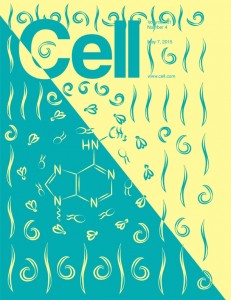 Researchers at Harvard have retracted a Cell paper on biofilm disassembly after they repeated the experiment—following contradictory results from another team—and the new results “can no longer support” the original conclusions.
Researchers at Harvard have retracted a Cell paper on biofilm disassembly after they repeated the experiment—following contradictory results from another team—and the new results “can no longer support” the original conclusions.
The 2012 paper, “A Self-Produced Trigger for Biofilm Disassembly that Targets Exopolysaccharide,” describes a factor called norspermidine, produced by the bacteria Bacillus subtilis, that appeared to break down biofilms. The researchers used it to prevent biofilm formation of B. subtilis, Escherichia coli, and Staphylococcus aureus. The paper was cited 72 times, according to Thomson Scientific’s Web of Knowledge.
Two years after it was published, a team from University of Texas Southwestern Medical Center in Dallas and the University of Dundee in the UK contradicted the findings in another Cell publication, “Norspermidine Is Not a Self-Produced Trigger for Biofilm Disassembly.” This time, the authors concluded that norspermidine is not present in B. subtilis biofilms, and actually promotes, rather than breaks down, biofilms. They wrote:
In contrast, we find that, at concentrations up to 200 μM, exogenous norspermidine promotes biofilm formation. We find that norspermidine is absent in wild-type B. subtilis biofilms at all stages, and higher concentrations of exogenous norspermidine eventually inhibit planktonic growth and biofilm formation in an exopolysaccharide-independent manner.
The authors of the retracted paper, led by Richard Losick, a PI in Harvard University’s molecular and cellular biology department, and John Clardy, a biochemist at Harvard Medical School, do not state in the retraction notice whether their second-round results matched the results from the University of Texas Cell paper.
Here’s the full retraction notice:
In this article, we reported that norspermidine is produced in aged biofilm cultures of Bacillus subtilis and that norspermidine could disassemble and inhibit B. subtilis biofilms. Both claims have been challenged by Hobley et al. (2014, Cell 156, 844–854). We have subsequently repeated the experiments and have found that the new results can no longer support our original conclusions. Therefore, the most appropriate course of action is to retract the article. We offer our apologies for these errors and for any inconvenience that they may have caused.
Cell had nothing to add when we reached out to them. Media relations manager Joseph Caputo said:
In general, Cell Press does not comment on internal investigations that lead to retractions. The retraction notice is our official statement in this case.
Losick and the first author on the retracted paper, Ilana Kolodkin-Gal, were also authors on a 2010 Science paper that identified a group of amino acids that signal B. subtilis biofilm assembly. In 2013, Losick’s team clarified that finding in a Journal of Bacteriology paper, revealing that the strain of B. subtilis they had been using was actually a mutant strain, and repairing the mutation abolished the effect of the amino acids to prevent biofilm growth.
For more on that development, see a piece last spring in Nature Reviews Microbiology reviewing both the UT Cell study and the J. Bacteriology paper. It summarizes:
In conclusion, these two studies suggest that the roles of D-amino acids and norspermidine as specific biofilm disassembly triggers are questionable and that, under certain conditions, these substances are general growth inhibitors that can indirectly inhibit biofilm formation.
On PubPeer, Kolodkin-Gal defended the Science paper results, writing:
The major findings of the Science paper were reproduced by independent groups, leading to the development of several anti-biofilm drugs (Hochbaum et al., 2011; Sanchez et al., 2013). For example, several groups independently showed that D-tyrosine can inhibit the biofilm formation of P. aeruginosa (Sanchez et al., 2014; Yu et al., 2012), and adhesion to surfaces (Xing et al., 2015). D-amino acids are capable of inhibiting and triggering dispersal of Staphylococcus biofilms under laboratory conditions, as well as in bone implants (Sanchez et al., 2013), disassembling biofilms composed of mixed species microbial aggregates (Sia et al., 2014), and inhibiting biofilms at the pathogen Xanthomonas citri (Li and Wang, 2014). All of these papers have demonstrated that the effects are seen in concentrations inert to planktonic growth.
Losick currently has four pending patent applications related to biofilm treatment.
We’ve reached out to Losick for comment and will update if we hear back.
Some PubPeer commenters are raising questions about the now retracted Cell paper and the Science paper, plus another Kolodkin-Gal paper in PLOS Biology: https://pubpeer.com/publications/4C924CF90815A174F54466001DB5B7#fb29865
And two additional papers:
https://pubpeer.com/publications/9C0E948927DFEB60EFBABFDCB8DB2A#fb29934
https://pubpeer.com/publications/87A8DB1E2A79F815241489F25DC095#fb29935
There is another realated paper in JACS, with Thomas Boettcher as first author and Kolodkin-Gal as second, where they make similar compounds and test their activity on biofilms. These are norspermidine derivatives in that paper… However, the D-amino acids papers are entirely different beasts.
Unrelatedly, Kolodkin-Gal is now an assistant professor at the Weizmann Institute in Israel.
Two more papers with the involvement of the Weizmann-PI Kolodkin-Gal flagged:
https://pubpeer.com/publications/87A8DB1E2A79F815241489F25DC095#fb29935
https://pubpeer.com/publications/9C0E948927DFEB60EFBABFDCB8DB2A#fb29934
Autor is actively engaged in discussion on PubPeer, yet no official statements from other authors or current/past employer so far, at least not signed as such.
If this paper is retracted, then why does the retracted paper’s PDF not carry the word “RETRACTED” across every page?
http://www.cell.com/cell/fulltext/S0092-8674(12)00404-7
http://www.cell.com/cell/pdf/S0092-8674(12)00404-7.pdf
Is this COPE-compliant?